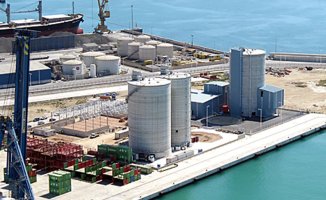There was a time when to feel like a true Soviet citizen you had to buy a Moskvich, put the whole family in it to go to the dacha when the weather was good and, when it wasn't, spend weekends in the garage to tinker between spark plugs, change the carburetor and repair the continuous faults that were arising. Less known outside the ex-Soviet space than the Lada or the Volga, the Moskvich lived its golden age in the sixties and seventies of the last century and had a function similar to that of the Seat 600 in Spain.
At a time of new isolation as a result of its crackdown on Ukraine and Western sanctions, Russia wants to resurrect one of the biggest automakers of Soviet times. This week it was announced by the mayor of Moscow, Sergei Sobianin, taking advantage of the fact that the French group Renault leaves Russia and the factory where those almost forgotten little ones were built.
He justified the decision as an obligation towards the company's workers. But for Russia it is also a necessity. The departure of Renault and other companies in the sector is a blow to the Russian automobile market that is added to the shortage of imported components and spare parts that the industry is suffering and may suffer as a result of the new reality. According to the European Business Association in Russia, in April the sale of new cars fell by 78.5%, to 32,700 units.
After an agreement with the State, the Renault plant in Moscow, Avtoframos, becomes the property of the Government of the capital. The business (valued at 2,195 million euros) was completed by 67.69% of the shares of AvtoVAZ, manufacturer of the Lada, in Togliatti. This package goes to a state research center (the MAMI), but with a repurchase option in six years.
It is not public how much Russia has paid for the transfer, but a month ago the Russian Industry Minister, Denis Manturov, said that it would be the symbolic amount of “one ruble”.
Although it is hard to believe, the germ of the Moskvich is in the United States, then a friend. There he traveled in 1929 a Soviet commission to select manufacturers and create a chain production of automobiles in the red country. An agreement was signed with Ford and factories were built in Nizhny Novgorod (later GAZ) and in Moscow.
The one in the capital was called KIM (Russian acronym for the Communist Youth International). It began by manufacturing Ford A and Ford AA models, or their Soviet heirs GAZ A and GAZ AA. But after World War II it was decided to create more affordable cars, which were called Moskvich, which in Russian means Muscovite. The company was renamed the Moscow Small Car Factory (MZMA). In 1947 it began to manufacture the Moskvich-400, the first of a series of almost 50 models that accompanied the Soviets and Russians until 2001, when production ceased.
The Moskviches became everywhere, even in the movies. The 1972 film The Racing Drivers, by Igor Maslennikov, made them heroes of their time.
The company, called AZLK (Factory Komsomol Lenin) since 1968, succumbed to economic difficulties after the end of the USSR. In 2006 it was declared bankrupt, and in 2010, liquidated. Renault bought part of its facilities in 1998 and created the Avtoframos plant.
From there it is intended that a new generation of these small cars will come out again. The first batch will be combustion, but the Russian authorities want to make them electric. For the project, the main technological partner will be Kamaz, a well-known manufacturer of robust Russian trucks. But they could also join, according to the local press, some of China's large automobile groups, such as JAC Motors, First Automobile Works (FAW) and BYD Auto, with which there are already contacts.
The Moskvich were a member of the Soviet families. This nostalgia for past times continues even today, as one can still be found parked in any corner of the city. In fact, some 200,000 copies of this nostalgic Soviet car are still registered in Russia. It will be that the old glories never die.
4













